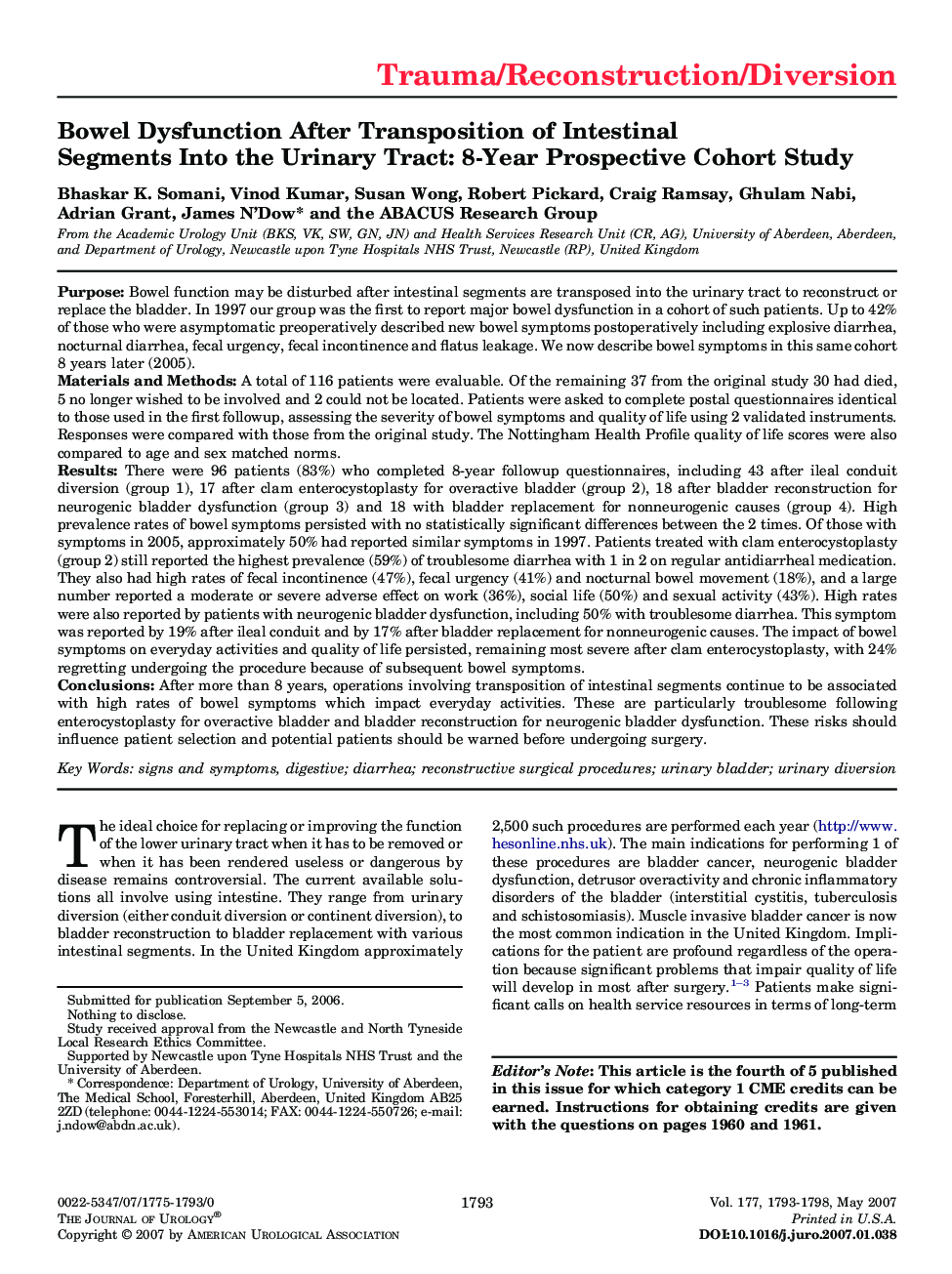| کد مقاله | کد نشریه | سال انتشار | مقاله انگلیسی | نسخه تمام متن |
|---|---|---|---|---|
| 3873808 | 1599009 | 2007 | 6 صفحه PDF | دانلود رایگان |

PurposeBowel function may be disturbed after intestinal segments are transposed into the urinary tract to reconstruct or replace the bladder. In 1997 our group was the first to report major bowel dysfunction in a cohort of such patients. Up to 42% of those who were asymptomatic preoperatively described new bowel symptoms postoperatively including explosive diarrhea, nocturnal diarrhea, fecal urgency, fecal incontinence and flatus leakage. We now describe bowel symptoms in this same cohort 8 years later (2005).Materials and MethodsA total of 116 patients were evaluable. Of the remaining 37 from the original study 30 had died, 5 no longer wished to be involved and 2 could not be located. Patients were asked to complete postal questionnaires identical to those used in the first followup, assessing the severity of bowel symptoms and quality of life using 2 validated instruments. Responses were compared with those from the original study. The Nottingham Health Profile quality of life scores were also compared to age and sex matched norms.ResultsThere were 96 patients (83%) who completed 8-year followup questionnaires, including 43 after ileal conduit diversion (group 1), 17 after clam enterocystoplasty for overactive bladder (group 2), 18 after bladder reconstruction for neurogenic bladder dysfunction (group 3) and 18 with bladder replacement for nonneurogenic causes (group 4). High prevalence rates of bowel symptoms persisted with no statistically significant differences between the 2 times. Of those with symptoms in 2005, approximately 50% had reported similar symptoms in 1997. Patients treated with clam enterocystoplasty (group 2) still reported the highest prevalence (59%) of troublesome diarrhea with 1 in 2 on regular antidiarrheal medication. They also had high rates of fecal incontinence (47%), fecal urgency (41%) and nocturnal bowel movement (18%), and a large number reported a moderate or severe adverse effect on work (36%), social life (50%) and sexual activity (43%). High rates were also reported by patients with neurogenic bladder dysfunction, including 50% with troublesome diarrhea. This symptom was reported by 19% after ileal conduit and by 17% after bladder replacement for nonneurogenic causes. The impact of bowel symptoms on everyday activities and quality of life persisted, remaining most severe after clam enterocystoplasty, with 24% regretting undergoing the procedure because of subsequent bowel symptoms.ConclusionsAfter more than 8 years, operations involving transposition of intestinal segments continue to be associated with high rates of bowel symptoms which impact everyday activities. These are particularly troublesome following enterocystoplasty for overactive bladder and bladder reconstruction for neurogenic bladder dysfunction. These risks should influence patient selection and potential patients should be warned before undergoing surgery.
Journal: The Journal of Urology - Volume 177, Issue 5, May 2007, Pages 1793–1798